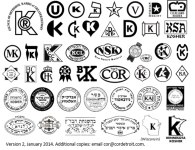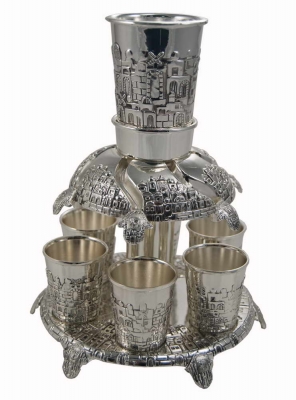Posts in This Series
Invited over for Shabbos Dinner (#1)
Invited over for Shabbos Dinner (#1)
Maybe you have a Jewish cousin you're reconnecting with, or a friend from school invited you over. Perhaps your partner is Jewish, and you've been invited to a Shabbos dinner at their parents' home. In any case, a Shabbos (alt: Shabbat) dinner is the most likely Jewish event for you to be invited to, both in general and as your first event. This is because they can happen as often as every week, depending on the traditions of the people and families in question, and tend to be private affairs. It's mostly just a meal, which means it's not as intimidating of an introduction to the Jewish world for a friend or family member as a Seder might be. Basically, it's really not a big deal and a good introduction for folks who are getting used to having Jewish friends or family members. If your friend, partner, or family member knows it's your first Jewish meal or event, they know you don't know everything, but here are seven tips that can help it go a little more smoothly nonetheless.
1. Shabbos dinner is always Friday night.
You might be invited over to a Jewish home for other meals. Great. Shabbos is only Friday night though.
2. The food will probably be some version kosher, inquire before bringing anything.
The degree to which your hosts keep kosher in their home can vary. The basic rules are as follows: no mixing meat and dairy, certain meats are off-limits, fish doesn't count as meat (no, I don't understand why either), and processed foods should have a kosher mark, known as a hechsher. Things that are neither meat nor dairy, like vegetables, breads, and fish (again, it just is) are considered pareve.
 |
| Some common kosher symbols, https://kosherquest.org/kosher-symbols/. |
Additionally, many families will observe a gap between eating meat and dairy. Some do as little as one hour, others as much as six hours. If the observance is on the shorter end, there may be dairy desserts after two or three hours. If your hosts express it will be a meat meal and you intend to bring a dairy dessert, you can ask how long they wait before you bring a beautiful cheesecake nobody can eat for six hours.
3. Kosher wine is a thing, make sure you know your host's rules before bringing it.
You may be asking what on God's green earth can go in wine that makes it unkosher and it basically can be explained as "because the Tanach (bible) said so" (or perhaps a longer post at another time). It's just a thing, and you can tell because there's a kosher mark. Your hosts may not care, may prefer kosher wine for explicitly Jewish things, or only drink kosher wine. The answer here is to ask before you bring a bottle. There's no hard-and-fast rule regarding red or white, both can be kosher and different families have different preferences.
4. There will likely be a Mezzuzah on the door.
You can ignore it if you like, just don't attempt to pull it down or alter it any way. It's put up by Jewish households on doorways (with the exception of bathrooms), and contains a specific scroll inside. The cases are made from a variety of materials in many shapes, including those made by children. Many Jewish folks have a custom of touching it upon entering or exiting a room, sometimes kissing their hand before (although probably not as much during a pandemic). It's not offensive either way if you do or don't.
 |
| An example: https://reformjudaism.org/practice/lifecycle-and-rituals/what-mezuzah-why-and-how-do-we-use-it |
A kippah is a small head-covering traditionally worn by Jewish men or men in Jewish spaces. If someone is wearing a kippah outside a synagogue or other explicitly Jewish space, they're most likely Jewish. Inside Jewish spaces, like synagogues, all men are asked to wear kippot (plural of kippah). Some families extend this to Shabbat meals or other explicitly Jewish meals (like Seders) and ask all men, Jewish and otherwise, to wear a kippah. In this case, they will have extras at the house, you are not expected to bring your own.
Women and non-binary folks are allowed to wear kippot (outside of certain Orthodox denominations), but not required.
Less common are head coverings explicitly for women, which sort of look like lace doilies most of the time. Although many orthodox women cover their hair completely with sheitels or wigs, in liberal denominations of Judaism it is more common to have symbolic coverings during services or events. Unlike kippot, which are for boys of all ages, women in Judaism only cover their heads after they are married or widowed. Most married Jewish women only do this during services or in other explicitly Jewish settings and use a smaller symbolic covering. If you have some other sort of religious head covering, you will not be asked to remove it.
Kippot can be made in a variety of prints and colors, and are often made for special occasions like bar mitzvahs or weddings, and guests are allowed to keep them as souvenirs. Some folks amass quite the collection.
 |
| Pink Kippot and women's hair coverings from my bat mitzvah. Most kippot are not pink. |
6. There are rituals before you eat.
If you've ever been to a friend's home and wondered when the meal is going to start, the good news is that Shabbos meals are ritualized enough you'll know. To start the meal, a series of three blessings are recited. First, candles are lit and blessed. You may be asked to light a candle, it's not offensive either way if you do or do not. Traditionally, women light and bless the candles, although it is not prohibited for men or non-binary folks.
If no women are present, or men choose to do so, they also may do so. The blessing is usually in Hebrew and done by all Jewish women (and men and non-binary folks who choose to do so) simultaneously while covering the eyes, usually with two hands. At least two candles are lit, often more. Some families, my own included, have one or two for each woman, one for each child, one for men who choose to do so, and then an extra for all those who cannot light. We also have extras on hand in case of guests, and many families have similar traditions.
 |
| https://www.westhillstorahcenter.com/shabbat-candles-1 |
Next, wine or grape juice is blessed. Many families also keep grape juice on hand for kids or people who don't drink-it's okay to prefer grape juice. In many families, everyone who is able will stand to bless the wine, called Kiddush. If your hosts stand up and you are able to do so, stand with them at this time. If wine/grape juice has been poured, everyone lifts their glass as they stand. Traditionally a Jewish man will bless the wine/grape juice in Hebrew, if there is none or a woman chooses to do it she is allowed to do so in more liberal strains of Judaism. There's a short blessing most families do and a second blessing many add, which is much longer. In such a case, there will likely be a pause, wait until whoever invited you goes to drink.
In many families, the blessed cup of wine will be passed around, sometimes in age order (after whoever blessed it), and everyone will take a sip. There are also little fountains some families have that evenly distribute the wine into shot glasses.
 |
| https://www.traditionsjewishgifts.com/blog/kiddush-fountains-for-the-sabbath/ |
Finally, the challah, which has been covered until this point, is blessed. Many families will only have one challah, very traditional ones will have two. The challah is held up by the person blessing it, which is typically done in Hebrew. Often, Jewish guests or children will be asked to bless the challah. After it is blessed, it will be distributed among everyone at the table and then the meal can start. Depending on the size and traditions of the family, they may cut or tear the challah apart to distribute it.
7. It's mostly just a normal meal.
Aside from prayer before eating and a couple of dietary restrictions, it's basically just a nice meal with your friends, family, or partner. You can wear whatever you'd normally wear to a nice family meal at that person's house. There may be more specific traditions your hosts have, but you can ask along the way.
When it doubt, ask your hosts, but I hope these seven points have given you some jumping points to start with.
No comments:
Post a Comment